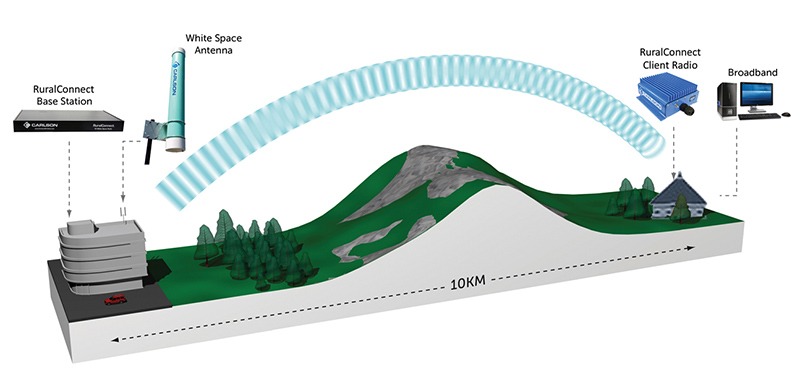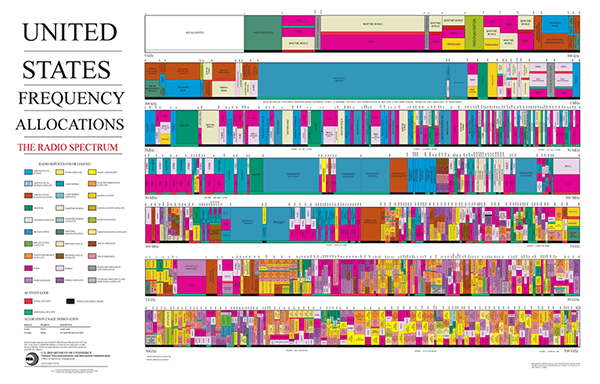
Remember back when TV signals were sent long distances through the air? Ever wonder why we don’t do that with the Internet? Wonder no more: 802.11af, often called “White-Fi” or “Super Wi-Fi,” has existed for years now, and it’s starting to be used worldwide to send Internet signals over long distances – up into the tens of kilometers.
It’s a game-changer for rural Internet users who can’t be easily reached by conventional broadband technologies, and because it’s great at penetrating multiple layers of obstructions (walls, trees, etc.), it’ll probably be useful in city-wide IoT networks as well. Find out below what it is, how well it works, where it’s been all this time, and why it’s not technically Wi-Fi.
802.11af: What Is White-Fi/Super Wi-Fi?

Confusingly, the 802.11af wireless standard is often called by two different names: Super Wi-Fi and White-Fi. Super Wi-Fi because it’s, well, super – meaning it can go long distances – and White-Fi because it fills in the white (unused/blank) spaces in the spectrum. It’s also not technically Wi-Fi because the Wi-Fi Alliance isn’t actually behind the 802.11af standard, so we’ll go with the less-subjective and less-contentious “White-Fi” here.
White-fi is exciting because, like television signals, it occupies a space pretty low on the spectrum, under 1 GHz (normal Wi-Fi runs on 2.4 and 5 GHz). This means that the waves are longer, which in turn means that the signal can travel longer distances and cut through more obstacles. Exactly how far White-Fi might be able to go isn’t completely certain, but most estimates are somewhere in the ten-kilometer range, with variances due to power and terrain. Carlson, one of the few companies currently using it, advertises ranges of up to 50km.
What makes it a little less exciting is that its lower frequency also confines it to lower overall bandwidth. Essentially, White-Fi is amazing at getting places from the zero/dial-up stage to the “pretty much modern Internet” stage. It’s also great at connecting low-bandwidth applications, as we see in IoT, across long distances. End users shouldn’t expect much over 20 Mbps, which is fine for a few users, but might run into some issues if too many families/businesses share a single signal. Individual devices probably won’t be compatible with it, either: it’s more likely that signals will be sent to a local or home base station, then delivered to end users and converted to 2.4/5GHz conventional Wi-Fi. So far, though, initial rollouts have mostly been a success.
Sounds great. When do I get it?

You might have had it by now, but figuring out who gets to use what part of the electromagnetic spectrum is weird and the regulatory systems have taken a long time to catch up with the technological possibilities. Essentially, White-Fi is travelling over the spaces between TV channels, but those spaces aren’t the same everywhere. Different regions use different parts of the spectrum, and to make sure White-Fi doesn’t cause any problems, someone has to make sure that there’s a system in place to figure out which frequencies White-Fi is allowed on in different places.
This whole process has taken the better part of fifteen years to resolve, but it’s finally reaching an end, and some local providers have already started rolling out the technology on a small scale in places where they can guarantee there won’t be any spectrum issues (mostly very rural areas). If you live somewhere remote, you might see White-Fi bringing you decent Internet in the next few years. If you live somewhere more populated (and therefore with better alternatives and more occupied TV channels), don’t hold your breath. Urban White-Fi will probably be mostly an IoT technology, but could also be used to deliver Internet to hard-to-reach spaces or underserved neighborhoods.
Is there actually a future for White-Fi?
All technological progress is pretty unpredictable, so there’s also a chance that another long-range Internet technology will win out, or even that a worldwide high-speed satellite Internet network will solve the problem before anything else does. There’s probably another technology out there that would do what White-Fi does, but if no competitors manage to distinguish themselves in the next five or ten years, the 802.11 standard will probably be able to add “af” to its list of successes.








